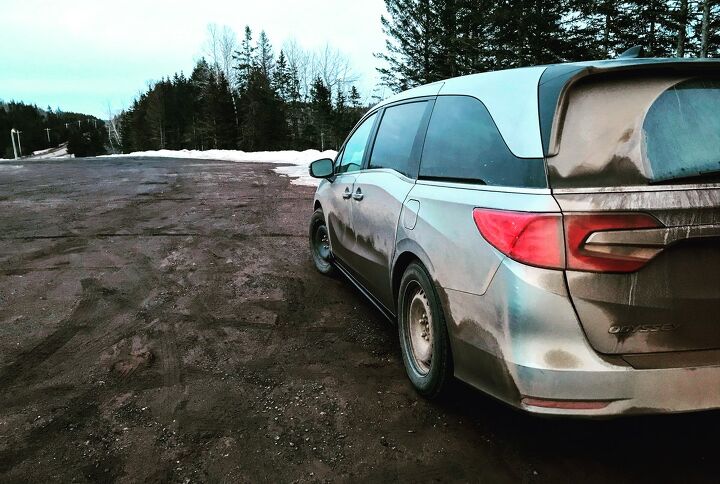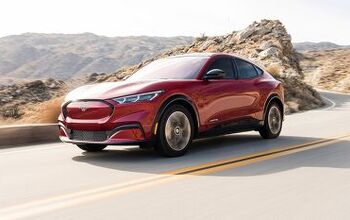Long-Term Update: Two Years And 28,000 Miles In the 2018 Honda Odyssey - Great Vehicle, or the Greatest Vehicle?
In spite of considerations involving pickups, downsizing, and three-row utility vehicles, our family ended up in our second consecutive Honda Odyssey in the spring of 2018. This time, against conventional wisdom, we were early adopters of the new-for-2018 fifth-generation Odyssey. Against my own internal bias, we acquired a vehicle with a nine-speed automatic transmission, nine-speeds having disappointed me previously in everything from the Chrysler 200 and Pacifica to the Fiat 500X, Jeep Renegade, Jeep Cherokee, and Honda’s own Acura TLX and MDX.
And against conventional buying patterns, we opted for one of the five remaining vans on offer in the North American marketplace. Changes in the typical family vehicle buyer’s tastes have seen demand for vans plummet: segment-wide volume was down 15 percent in the U.S. in 2019; 2020 minivan volume will fall for a fourth consecutive year. Current minivan market share stands at just 2 percent, down from 4 percent in 2011 and 6 percent in 2006. In a market that (quite unpredictably) slid by more than 12 percent in 2020’s first-quarter, van sales were down 21 percent, a loss of over 21,000 U.S. sales.
It’s a bizarre outcome given the undeniable, incontrovertible, unquestionable fact that the Honda Odyssey is the best vehicle on the market.
Excuse the hyperbole, particularly since even one who accepts such a “fact” will need to separate desirability from superiority. For family-of-five duties, I would prefer a Chevrolet Suburban, Ford Expedition, most any full-size pickup, a Kia Telluride, a Toyota 4Runner, or any number of premium three-row utilities. But pound-for-pound and dollar-for-dollar, are any of them better?
The breadth of talent on offer in the Odyssey – and its four competitors, to be frank – is remarkable. Its adult-friendly third row space is a decidedly unusual trait in SUVs of any size. Ample V6 power (0-60 mph in less than seven seconds; 50-70 mph in a tick over four seconds) is matched with observed fuel economy of between 21 and 25 miles per gallon. The ability to slide in 10-foot-long 2x4s has proven helpful on more than one occasion, and there’s 144 percent more cargo capacity (38.6 cubic feet) behind the third row than there is in the trunk of a Honda Accord. The nine-speed is inoffensive, the Odyssey is a safety-ratings chart-topper, and the convenience of power-sliding doors and the Odyssey’s unique sliding second-row outboard seats can’t be understated, whether you’re loading an infant seat or fetching a sleeping six-year-old from the third row.
Throw in high equipment levels (including a sunroof, remote start, adaptive cruise control, auto high beams, a 12-way power driver’s seat, tri-zone automatic climate control, a built-in vacuum) and the relatively pricey Odyssey’s value equation starts to come more clearly into view. The 2018 Odyssey EX was priced at $34,800 in the U.S. when new; the 2020 is $35,910 including freight/pdi and the previously Touring-exclusive 10-speed auto. (For the record, we lease an Odyssey from Honda Canada. Excellent residuals, Honda loyalty discounts, and equity in our last van combined for a wonderfully affordable payment.)
The Odyssey has other perks, but they’re less likely to be appreciated by the typical minivan buyer.
We live in rural Prince Edward Island on a road favoured by motorcyclists; in an area jam-packed with great roads. Should a minivan’s best-in-class ride and handling matter? In our case, most definitely. Due to my spirited driving style and the fact that we tend to run a bit late, I don’t want to feel like I’m driving a miniaturized school bus, certainly not on these roads. The Odyssey’s not an S2000, nor will it be confused for an Accord Sport. But there are characteristics reminiscent of the Accord, and that’s an achievement I can appreciate.
The Odyssey can also tow up to 3,500 pounds; 3,000 as equipped. We’re frequently towing an aluminum trailer with two ATVs, and the Odyssey’s V6 minds the load not at all. So loaded, we registered 18 miles per gallon on a trip to Nova Scotia and back.
So, the big Honda is perfect?
No.
Not quite.
The Odyssey shouts value from the mountaintops, but there are unfortunate omissions. The nature of Honda’s no-options trim packaging means you’ll need to shell out an additional $3,270 to get a leather-wrapped steering wheel. This also feels like a lot of money to spend on a family hauler with no power tailgate.
The Odyssey’s 12-way power seat is a blessing, but minivan seating positions still just never feel right. The front passenger’s footwell is cramped, too, so it’s actually preferable to sit in the rear rows. The auto high beams intermittently forget that they have but one job, which requires a re-sync with reality. And the wonders of the Magic Slide second-row are, quite obviously, lost when you install the eighth seat betwixt the outboard duo. For our newborn’s early months, we experimented with spreading all three kids across the middle row in a pair of Diono Radian RXTs and a Graco Snugride, but it made inserting other kids (or grandparents) into the third row a pain in the neck, Magic Slide or not. This isn’t unexpected, it’s just one of those moments in which one of the most appealing aspects of a vehicle is completely negated by the vehicle’s own knack for hauling a lot of people.
(COVID-19, of course, has made this less of an issue now – friends and grandparents cease to exist, and the now four-month-old baby hasn’t been met in-person by an adult other than his parents in six weeks.)
Oh, and reliability? Maintenance costs, not including Bridgestone Blizzak swaps, total less than $400 to date. There were two recalls on those second-row seats and a recall for power-sliding doors that fail to latch, although we had not experienced any issue in our van. And, sadly to the surprise of few minivan owners and few experienced owners of first-model-year vehicles, our passenger-side sliding door required a new motor. It was hardly a major issue – we were fortunate not to lose the functionality of the door altogether. But with power to both doors turned off in order to maintain the use of both sides, small kids couldn’t run outside and get themselves buckled in on their own.
Perhaps the greatest vehicle would suffer no maladies whatsoever; perhaps no complaints could ever be leveled against The GOAT. The Odyssey, in that case, is not the greatest vehicle. Yet after two years and 28,000 miles in this Odyssey, I know I’d drive another. That’s high praise from someone whose alternative mode of transportation switches annually, from Miata to FR-S to Suzuki DRZ400SM to, most recently, a KTM Duke 390.
Timothy Cain is a contributing analyst at The Truth About Cars and Driving.ca and the founder and former editor of GoodCarBadCar.net. Follow on Twitter @timcaincars and Instagram.
More by Timothy Cain
Latest Car Reviews
Read moreLatest Product Reviews
Read moreRecent Comments
- Redapple2 I love my geolander by yokohama. Wild Peak are almost as good.
- Redapple2 Why is a mexico BYD china car BAD -End of the World! But > gm < Buick Envision good (build more !) ?
- Kwik_Shift_Pro4X Supporting EVs is supporting Chi-nah.
- Eliyahu Oh, a nicer looking 2025 Camry!
- Analoggrotto Sell Canada to Mexico.




































Comments
Join the conversation
Hilarious!
I own an Odyssey but had a midrange Pacifica as a loaner for a week last year - it was better. The BEST is still a Sienna (had two of those).